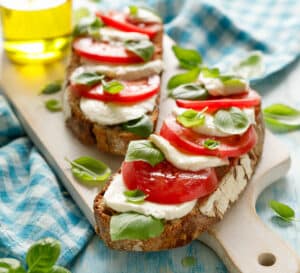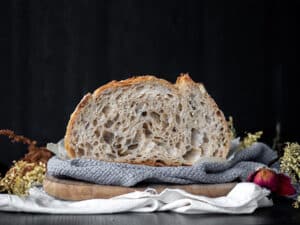Dietetics at the root of nutritional balance
Dietetics for a balanced diet
Dietetics is a science that seeks to study and define what makes “a healthy diet”, not in the toxicological meaning of the expression (purity/integrity of ingredients), but in the sense of balance: type and amount of ingested foods. Factors influencing dietary habits:
- A wider variety of products: over the last century, man’s diet has evolved greatly, offering a greater diversity of products (imported fruit and vegetables, the availability of fresh fish across the country thanks to the appropriate storage and transport methods, etc.), but also improved access to products formerly considered festive luxury goods thanks to today’s greater purchasing powers (meat, etc.).
- Changes in lifestyles and consumption patterns: at the same time, lifestyles have also become more sedentary with less emphasis on physical exertion (developments in transport, tools, stationary work, etc.). But consumption patterns have also changed (in towns especially where far less time is devoted to meal preparation, with increasing numbers of women going out to work). These developments have not always taken place at the same time for all individuals and some continue to follow a diet more appropriate for physical workers, while maintaining a sedentary lifestyle.
Dietetics therefore seeks to study these new needs and devise the most appropriate dietary sources in terms of the quantity and diversity of ingredients.
Dietetics – a promising market
A topic of great commercial attention at the moment, dietetics is of interest to many businesses seeking to derive profit from this promising new niche. Players in the industry are bringing to the market a growing number of food products advertised as “XX-free”. Some critics have thus spoken out, citing bread as the enemy, without really being aware of the nutritional details.
Bread, the food that’s good for the health!
Bread on its own, or enriched
The subject of heavy criticism a few years ago, bread has now found renewed favour with dieticians and the general public, who have become aware of its intrinsic qualities: often the danger did not stem from bread itself, but from the accompanying spreads and toppings. Bread on its own is low in fat, but together with butter, cheese or eaten as a sandwich filled with meat, poultry and used to mop up sauces, it becomes a rich, if not excessively rich, unbalanced foodstuff.
Given the difficulty in separating the staple product from the bad habits surrounding its use, many dieticians have tended to eliminate it from the diet, rather than try to educate consumers anew.
The dietetic and nutritional qualities of bread
Bread is perfectly adapted to a balanced diet due to its low lipid content (the fat contained to excess in our daily diets and the cause of so many cardiovascular diseases) and its high levels of slow sugars (providing the long-term energy required to avoid hunger pangs).
In what way is bread a dietetically and nutritionally balanced foodstuff?
CARBOHYDRATES: A source of energy for muscles during prolonged exertion. Flour is composed of 65 to 70 % starch, which is an assimilable slow sugar that gives a feeling of long-term satiety. Eating bread for breakfast therefore helps prevent that mid-morning hollow feeling and helps regulate feelings of hunger experienced during a meal, without adding too many fats or sugars.
LIPIDS: A source of energy and reserves. Wheat lipids are mainly found in the germ, which is generally extracted during grinding. Today’s bread contains only 1% lipids, i.e. unsaturated fatty acids beneficial for the organism, such as linoleic acid, which helps prevent cardiovascular diseases: it is therefore a highly beneficial food for rebalancing our often fat-rich dietary intake.
PROTEINS: Nitrogen-rich substances (growth, cell renewal, etc.). Bread contains 7 to 8 % low-in-fat vegetable proteins, excellent for the muscle tissues, and thus contributes to our daily needs and allowances, if it is supplemented with dairy produce, for example.
MINERALS: Present in beneficial amounts in wholemeal wheat flour (350 mg potassium, 330 phosphorus, 120 magnesium), with around 2/3 less found in white flour, hence the renewed popularity of “old-fashioned” bread made from wholemeal flour. Furthermore, sodium is added in the form of essential salt, incorporated at the mixing stage.




